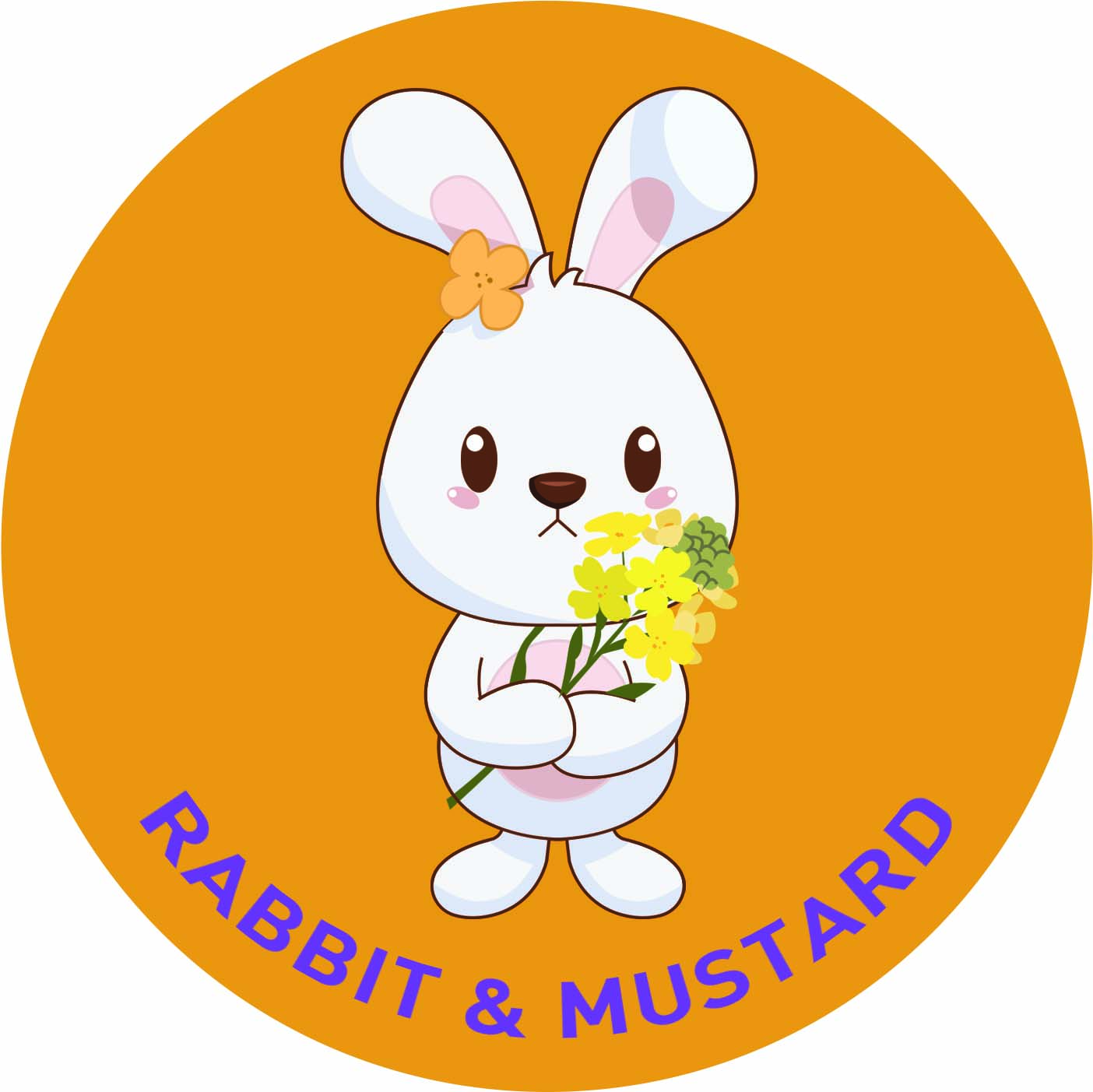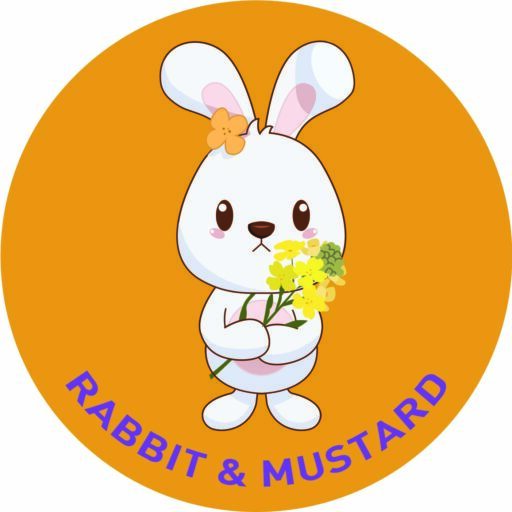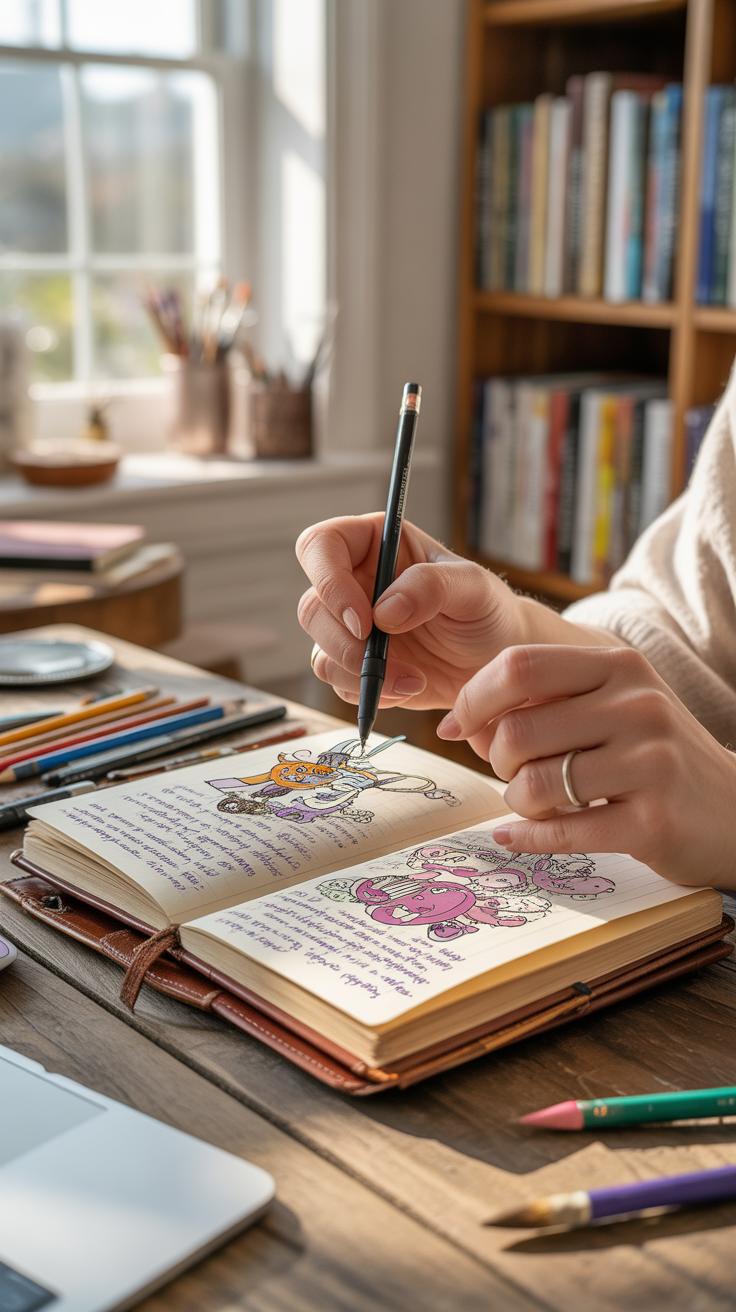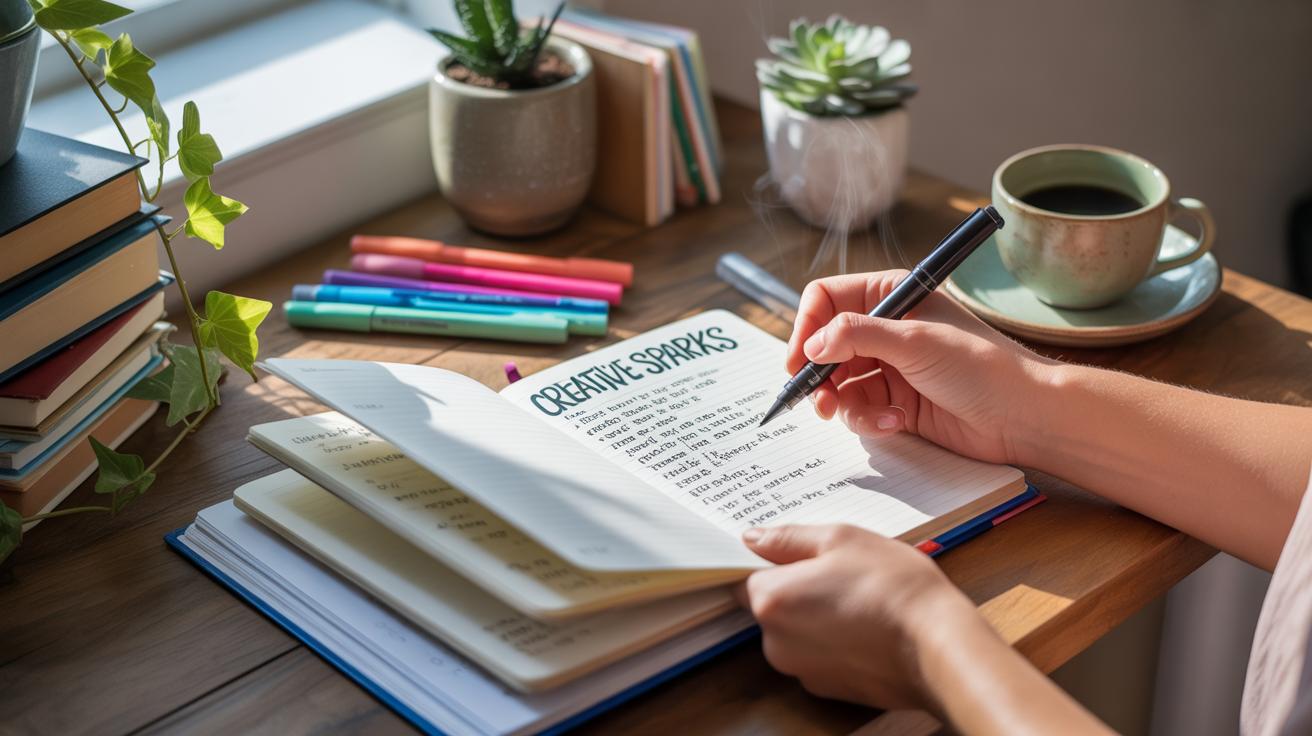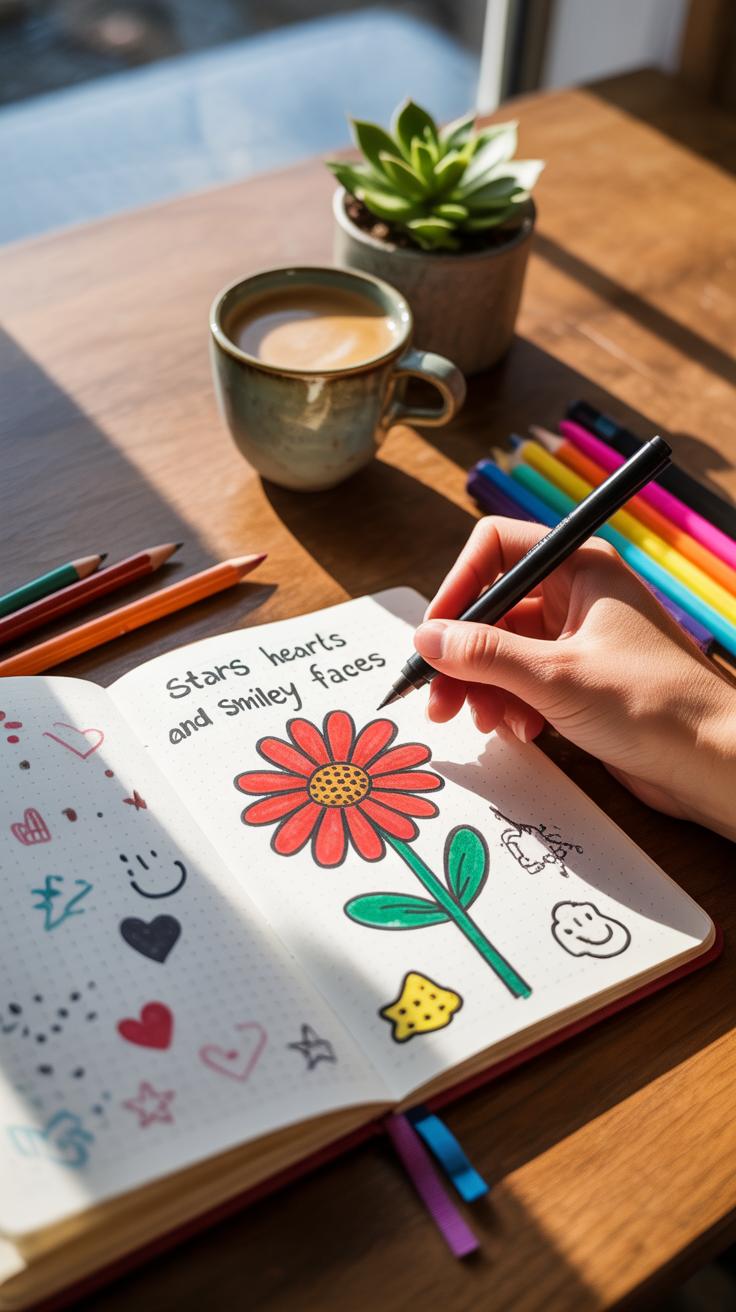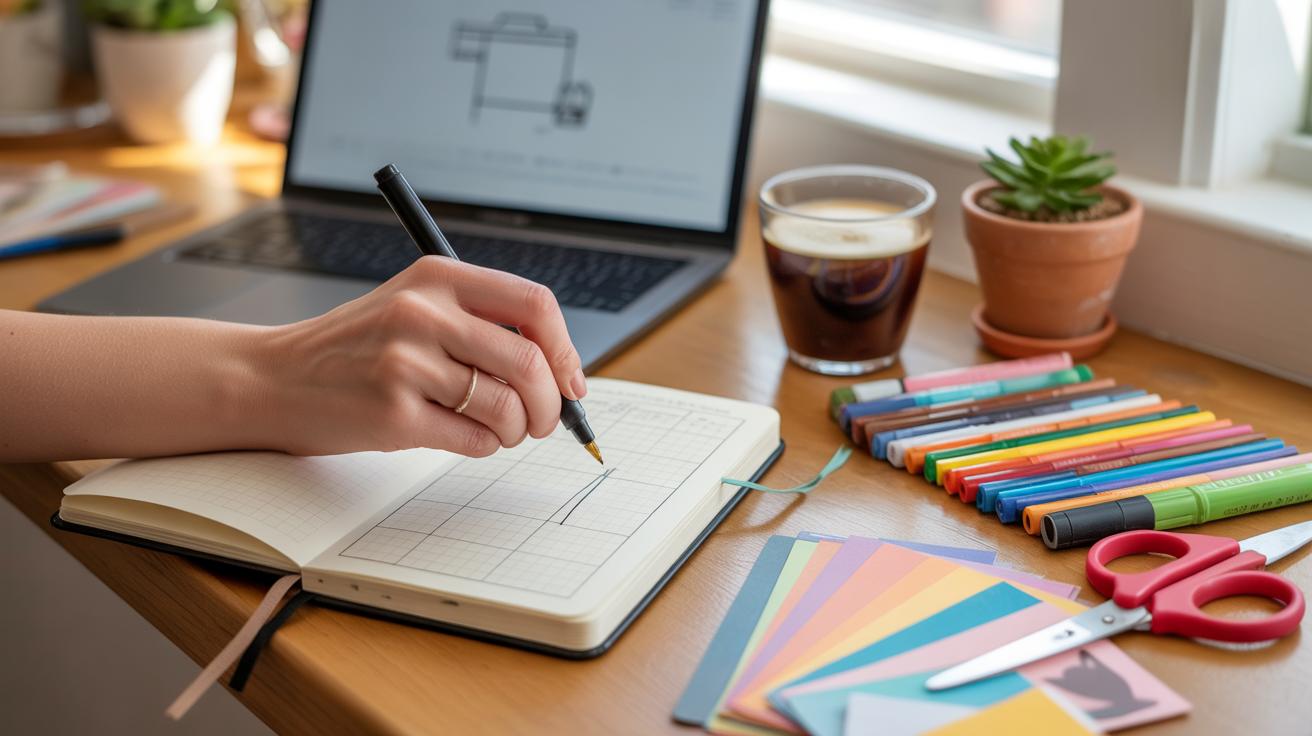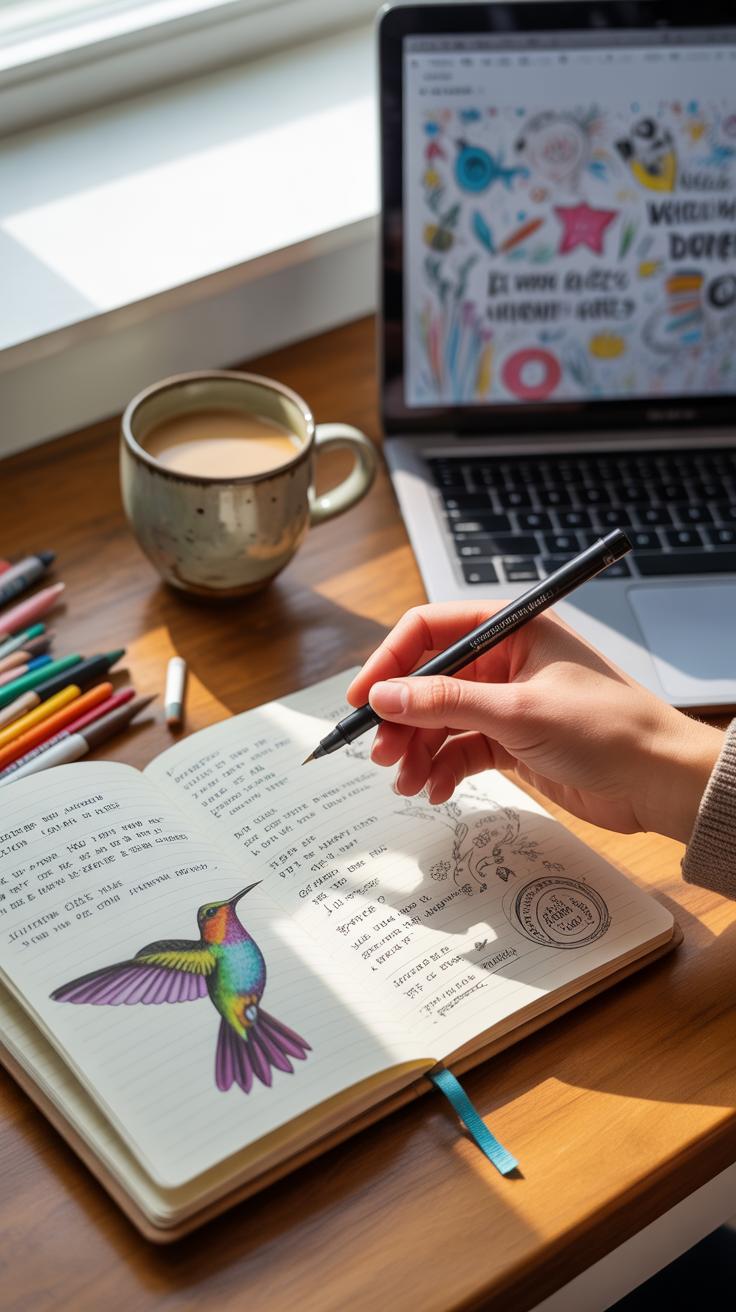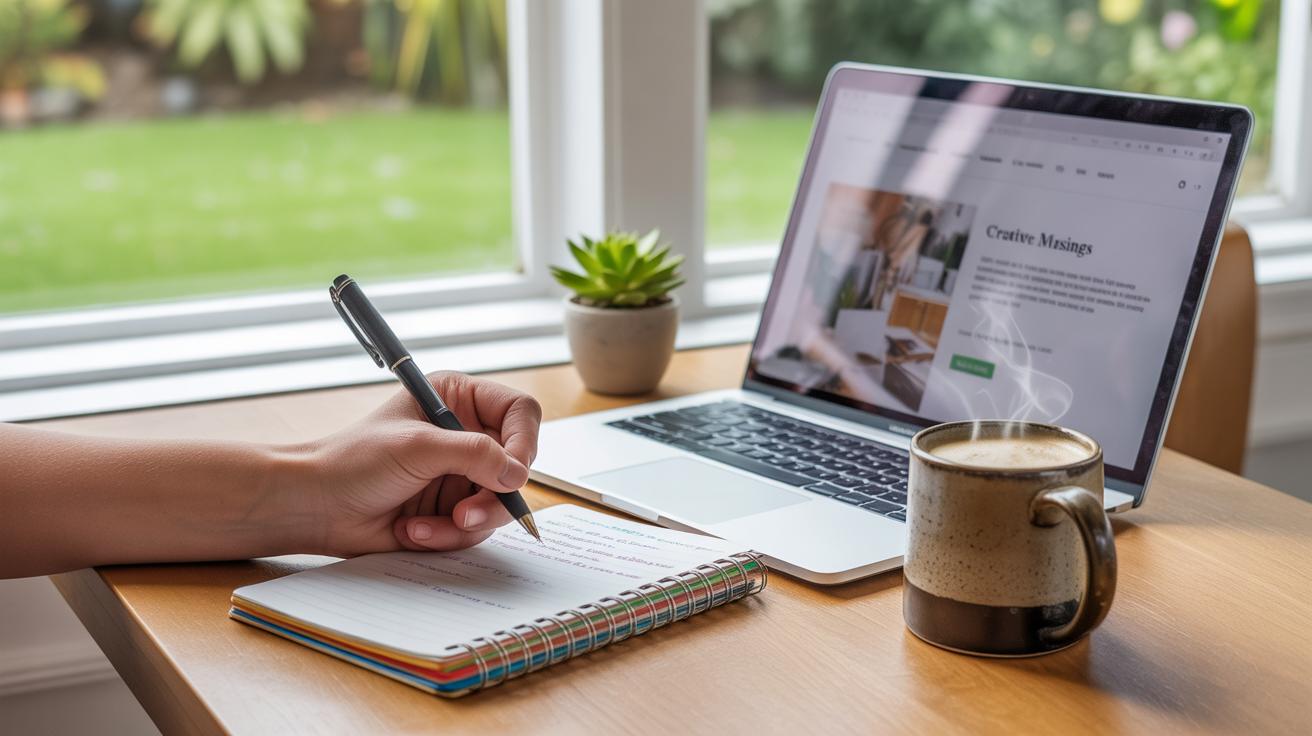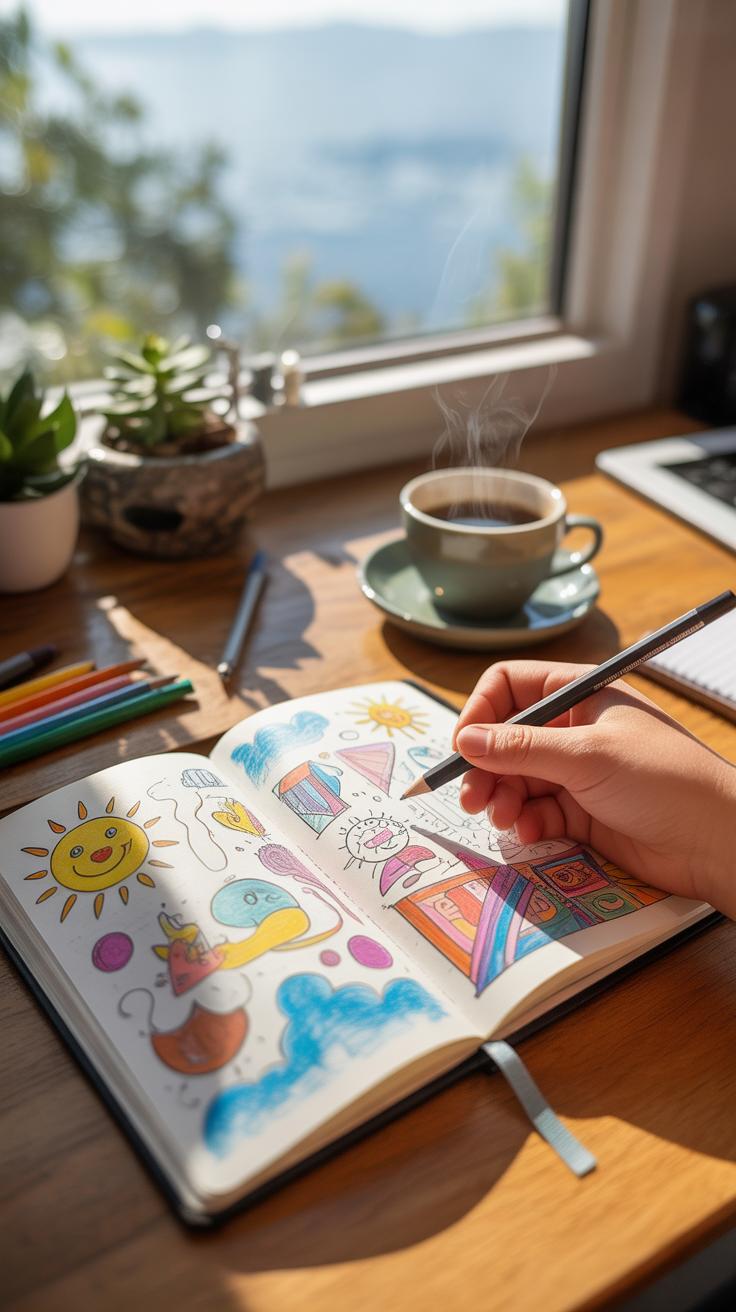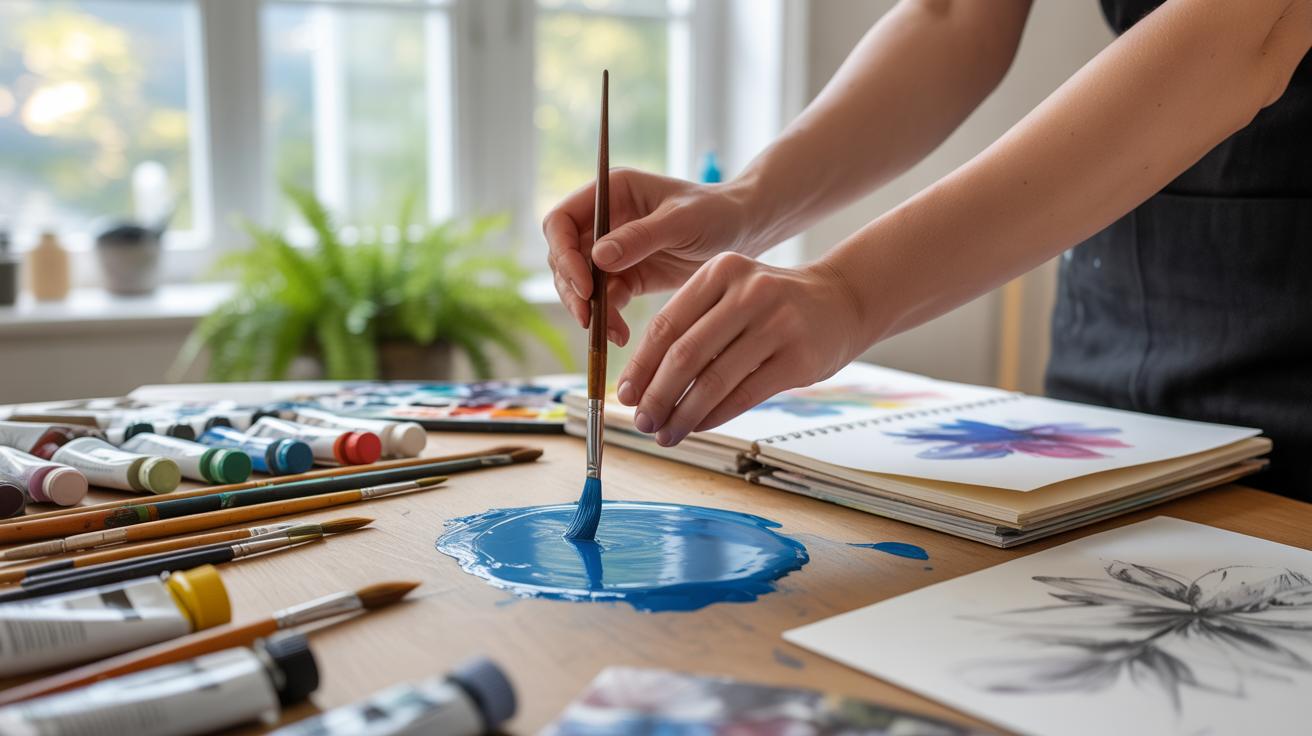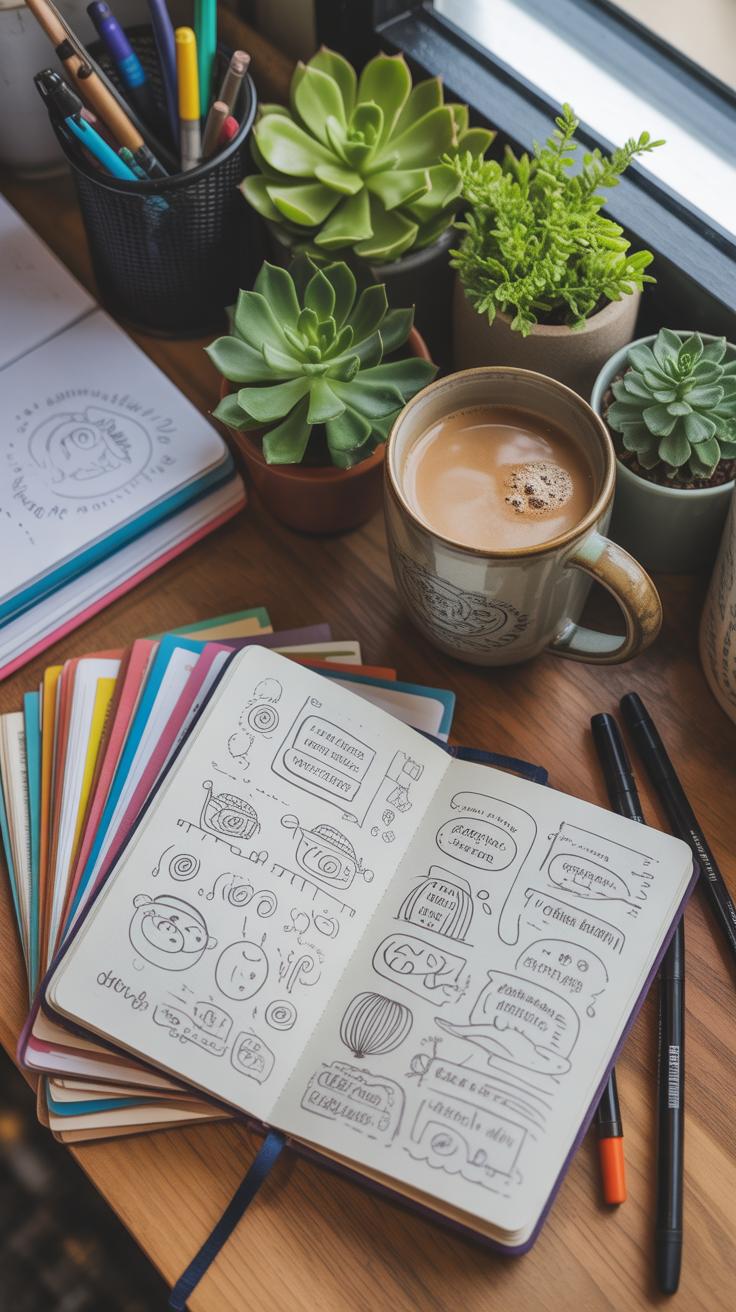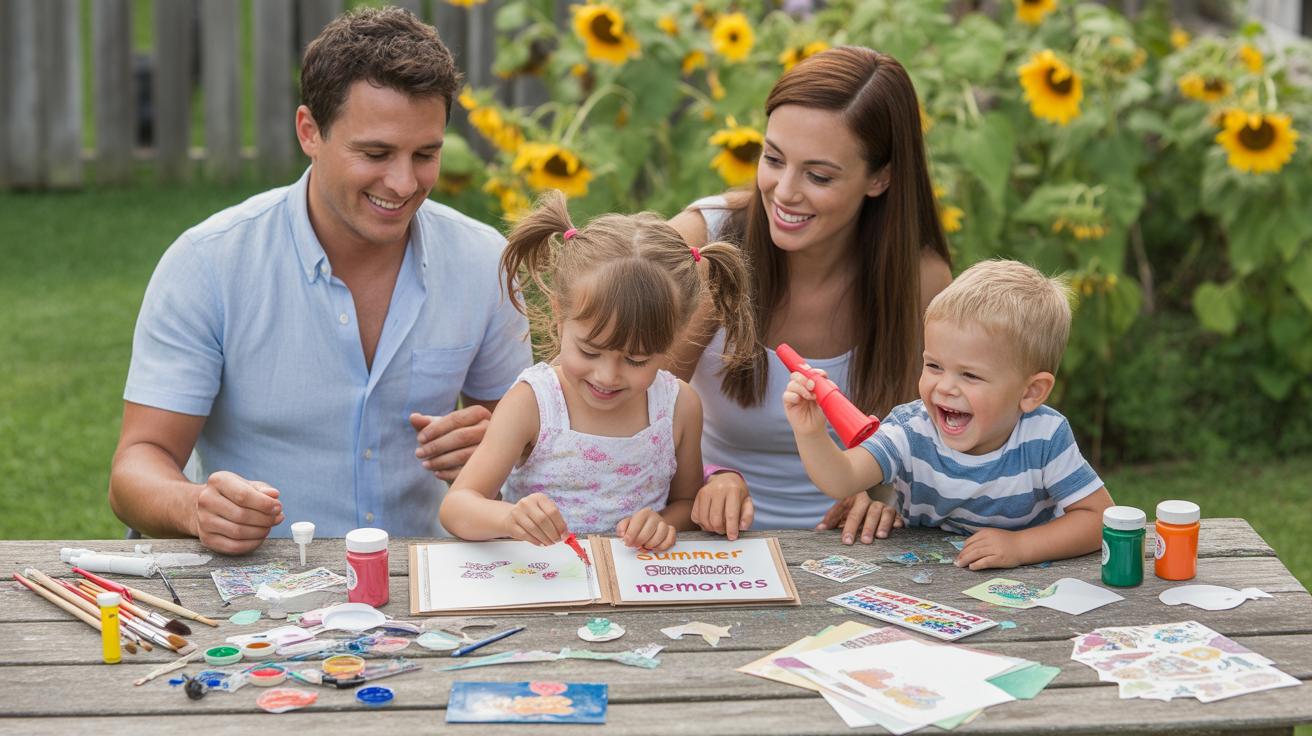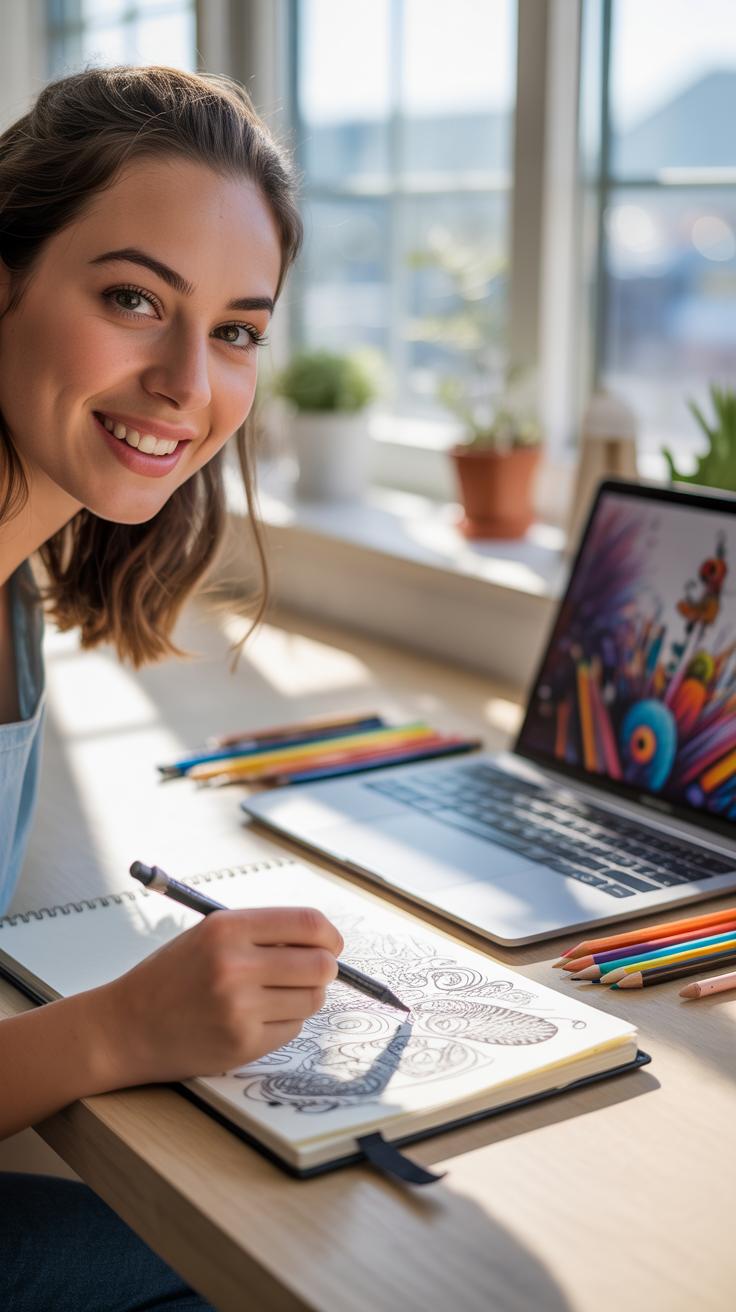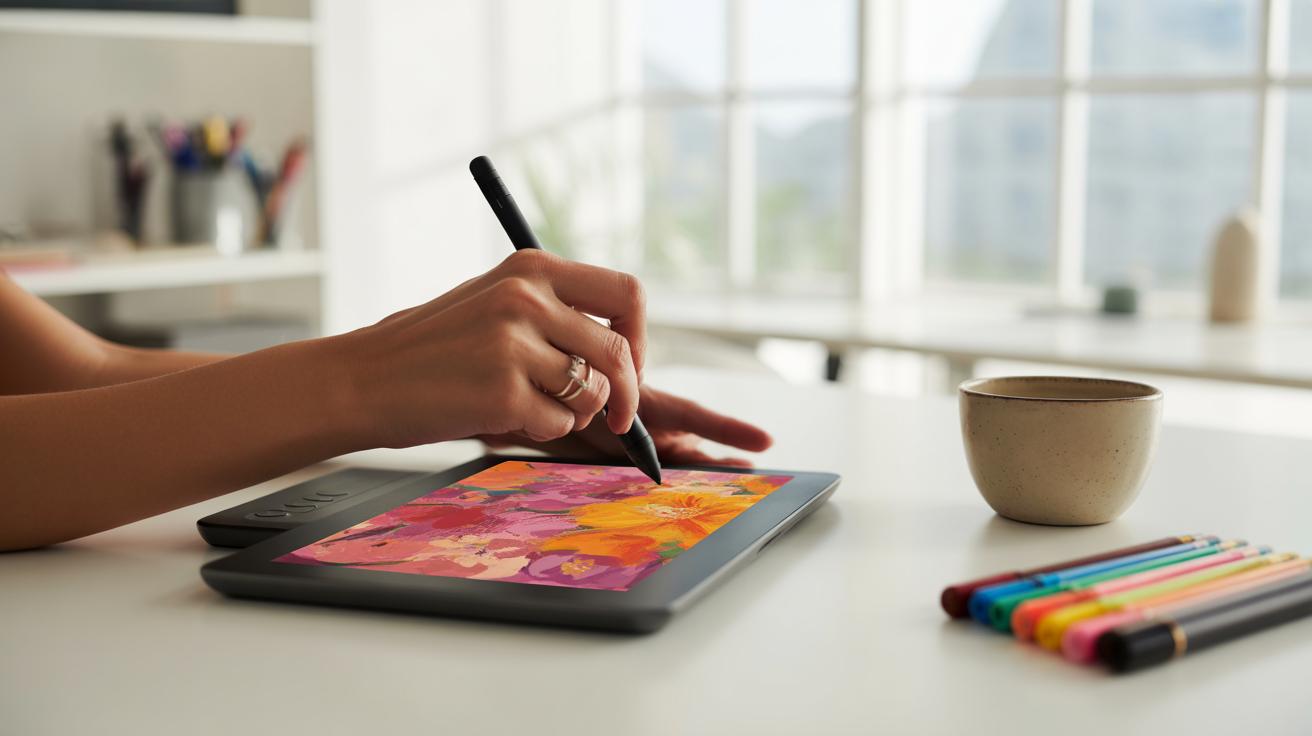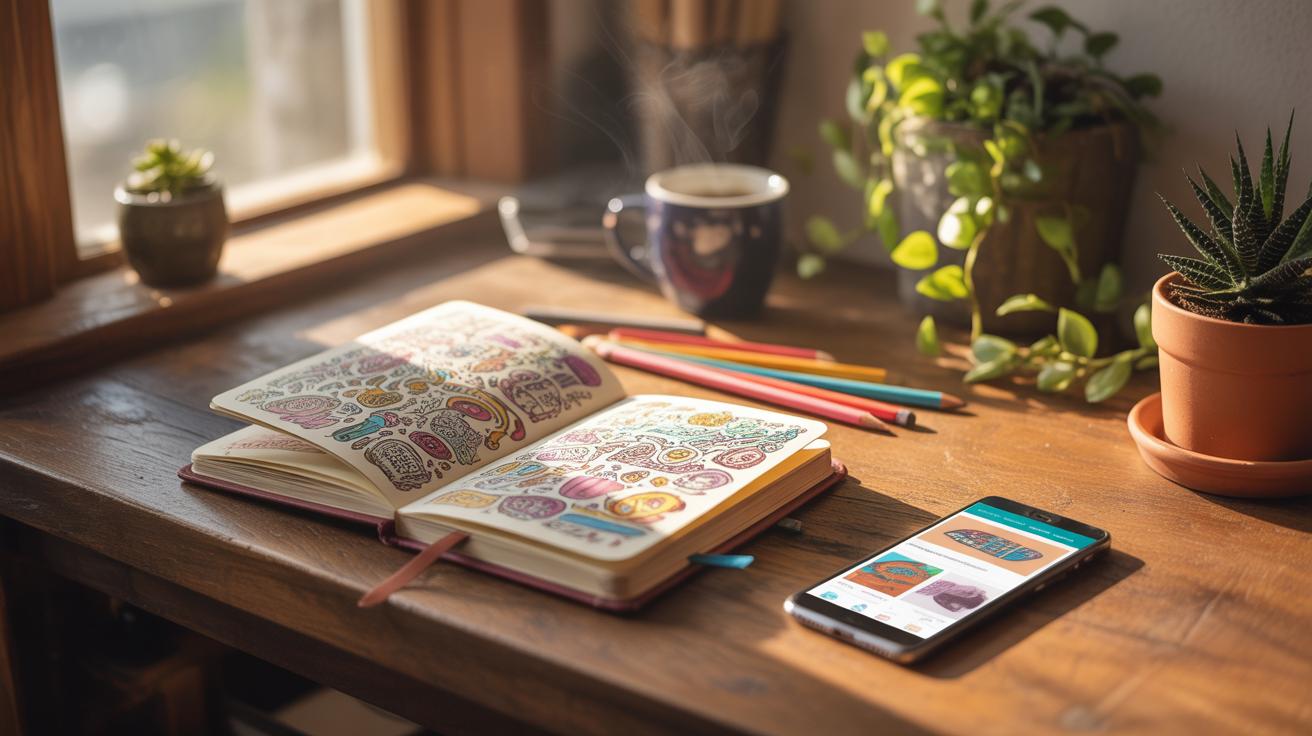
Journal Doodles to Spark Your Creativity and Boost Fun
Introduction
Journal doodles are simple drawings or sketches that you add to your journal pages. They can be anything from little shapes, faces, plants, or abstract designs. Adding doodles makes journaling more playful and personal. It turns your journal from just words into a mix of art and writing that shows your mood and creativity.
In this article, you will learn about what journal doodles are. You will discover how they can make your journaling experience more fun and inspiring. We will explore different ways you can use doodles to boost your creativity and keep your journal unique and interesting every day.
Understanding Journal Doodles
You might think of journal doodles as simple sketches or drawings added casually to your journal pages. They aren’t meant to look perfect or polished. Instead, doodles capture a loose, informal spirit—more like quick visual notes than detailed artwork. Sometimes, they’re just scribbles made while you’re thinking or pausing to catch a breath. Other times, they become little bits of creativity that brighten the page unexpectedly.
Common doodles include things like:
- Basic geometric shapes—a circle, triangle, or wavy lines
- Faces with exaggerated expressions or minimalist features
- Plants like leaves, flowers, or simple trees
- Abstract patterns—loops, crosshatches, or random swirls
For example, you might draw a smiling face next to a journal entry about a good day or surround a motivational quote with tiny stars and dots. These doodles don’t need to be anything more elaborate unless you want them to be. Their charm is in their spontaneity.
What sets these doodles apart from formal art is their intention. They aren’t created to be displayed or judged but to express whatever’s on your mind at that moment—or just to have fun. Sometimes, I find myself drawing a quick spiral or a leaf just because the pen feels good in my hand, without caring if it looks “right.” It’s this low-pressure, personal aspect that makes journal doodling a unique experience. Would you say it’s more about feeling than form?
Why Doodle in Your Journal
Doodling in your journal does more than just fill blank space. It opens up parts of your mind that words alone might miss. When you start sketching simple shapes or patterns, you give your brain a different kind of workout. This can spark creativity in ways you didn’t expect. Sometimes, those random doodles lead to new ideas popping up — ideas that might not come through just writing.
Think about how your hands move while doodling. That repetitive motion can ease tension, slow down a racing mind, and make you feel calmer. Even a few minutes of simple drawing might lower stress without much effort. It’s almost like your body relaxes without you having to try hard.
Also, journaling with doodles tends to feel less like a chore. You might find yourself looking forward to writing time because it’s not just words on the page. It’s a creative space where mistakes don’t matter. Doodles break up the seriousness, making journaling a bit lighter and more playful. Sometimes, you might forget that your journal is supposed to be neat or perfect. And that’s okay.
Have you noticed how a small sketch can lead your thoughts somewhere new? Maybe a curve or a swirl sparks a memory or a fresh question. That’s the subtle power of doodling — it’s like tossing a small seed that might grow into something interesting. At the very least, it can help you enjoy your journal more and keep going back to it.
Tools to Start Doodling
Choosing Pens and Pencils
When you’re ready to start doodling in your journal, the right tools matter more than you might expect. A simple ballpoint pen can work fine—it’s easy to control and doesn’t smudge much. But I’ve found that fine-tip gel pens or even felt-tip pens give your lines a bit more character, which makes doodling feel more satisfying. They flow smoothly, making it easier to create curves and details without frustration.
Pencils are another staple. Mechanical pencils or traditional wooden ones with a softer lead (like a 2B) let you sketch lightly and erase easily if you want to change things up. That flexibility can make doodling less intimidating, especially if you’re trying complex shapes or patterns.
Adding Color with Markers
For color, markers are where things get lively. They turn basic sketches into something that catches the eye quickly. I usually reach for a set of thin-tipped markers so I can add details without bleeding over the paper. Not all journals handle markers well, so finding ones with minimal bleed-through helps keep your pages neat.
Colored pencils are a quieter alternative. They offer control, subtle blending, and layering options. Sometimes, a wash of soft colors feels better than bold, bright tones. Experiment with both and see which sparks your mood more. Your journal is flexible that way—there’s no right or wrong choice.
Do you ever wonder how much your doodling changes just by switching up your tools? It’s a simple tweak that can refresh your whole approach—sometimes that little shift keeps you drawing more often.
Simple Doodle Ideas for Journals
If you want to get started with doodling but feel a bit stuck, try focusing on very simple shapes first. Circles, squares, waves, and spirals are easy to draw and don’t demand much time. For instance, arranging circles in rows or clusters can create a pleasing border or background pattern. Spirals can fill a corner or space without needing much planning. The key is to repeat and overlap these shapes just enough to keep it interesting, but not so much that it looks chaotic.
Once you’re comfortable, you can try incorporating everyday things into your doodles. Flowers are a classic choice—just a few petals around a center circle can work wonders. Leaves with simple veins or small stars scattered across a page add unexpected charm. You might even doodle little smiling faces in margins or next to notes to make the page feel more personal. It’s these small, familiar objects that give your journal warmth and personality.
Starting with these basic designs can help build a habit without pressure. You don’t need to draw a perfect rose or an elaborate pattern. Sometimes, the simpler, the better—plus, it frees you up to enjoy the process without worrying too much about how it looks. Have you ever noticed how a quick sketch of a leaf can suddenly make a whole page feel complete? That’s the quiet power of simple doodles.
Linking Doodles to Your Journal Entries
Connecting your doodles directly to your journal entries can deepen how you remember and understand your writing. Think of doodles not just as decoration, but as little anchors for meaning. For example, if you write about a stressful day, sketching jagged lines or a tight spiral next to that entry might capture the lived tension better than words alone. These small drawings serve as quick visual flags that highlight important moments or ideas.
Visual notes do more than just brighten a page. They can act as simple reminders—maybe a tiny sunray beside a hopeful thought or a coffee cup next to a note about needing an energy boost. Such marks help break up text, making scanning easier when you revisit your journal. They create a pattern your brain starts to recognize. Over time, these cues might even trigger the feelings or insights connected to those passages, long after the words blur together.
Using doodles to reflect mood adds a personal touch too. Sometimes a swirl or a smudge expresses frustration better than spelling it out. At times, your scribbles might contradict the words—a neat, calm flower drawn alongside a tense entry—showing mood shifts or inner conflicts. Capturing these subtle nuances in your doodles can unlock more honest reflection, helping you see beyond the surface of your writing.
Keeping a Doodle Journal Routine
Making doodling a steady part of your journaling can be tricky at first. You might think you need lots of time or grand ideas to start. But really, it’s fine to keep it simple—just one quick shape or sketch per entry. Small goals like that ease you into a rhythm without feeling like a chore.
Try setting a tiny daily or weekly target. Maybe you don’t even doodle every day, and that’s okay. What counts is returning often enough that it becomes a natural step, not an added task. I’ve noticed when I skip a few days, my doodling feels stiff at first. Then, gradually, it loosens up again.
Watching your progress can be surprisingly motivating. When you flip through your journal, you see ideas taking shape and skills growing. Some doodles might look awkward early on—but that’s part of the process. You might even spot small themes or favorite subjects emerging before you realize it.
Consider questions like these as you keep going:
- What new details can you add this time?
- Which shapes or patterns feel more natural now?
- Do your doodles reflect your mood or day differently over time?
Tracking these little changes helps transform doodling from a random act into a creative habit. It’s not about perfect lines or masterpieces. Instead, it’s about showing up for yourself, bit by bit, drawing connections between journal thoughts and your creative impulses.
Finding Inspiration for Journal Doodles
Sometimes, the best doodle ideas come from what’s right outside your window. Nature offers countless shapes and textures to explore—think about the way leaves twist, or how clouds shift on a windy day. Taking a moment to really watch these details can spark a new pattern or motif in your journal. You might not always notice the small things, but they often turn into the most interesting doodles.
Everyday scenes also hold surprising potential. A cup of coffee, the lines on a street map, or even the pattern of raindrops on glass can prompt a creative idea. Try to pause and sketch a quick version of what you see. It feels almost like a visual note-taking, but you’re capturing fragments that might otherwise slip away.
Your emotions and daily experiences play a huge role, too. When you’re excited, anxious, or simply bored, these feelings can push your pen in different directions. For example, a hectic day might inspire sharp, jagged lines, while calm moments invite soft, flowing shapes. Sometimes it’s hard to put feelings into words, but doodling offers a way to express them without thinking too much.
Ask yourself: what am I noticing right now? What’s happening inside me? Starting from these simple questions can lead to doodles that feel personal and alive, keeping your journal fresh and meaningful.
Sharing and Growing Your Doodle Skills
When you start sharing your journal doodles, it can feel a bit nerve-wracking but also rewarding. Putting your personal artwork out there opens up a new layer to your creative process. You might discover that others see things differently or suggest ideas you hadn’t thought of. Even simple feedback can push your doodling in fresh directions.
Online communities, like those on social media or dedicated forums, offer surprisingly rich spaces to exchange your sketches. Sometimes, you get quick responses that spark new concepts. Other times, you’ll stumble on a post that makes you rethink your usual style. It’s not always about instant improvement though—just seeing a range of styles and approaches can expand your own creative comfort zone.
Learning from others doesn’t stop online. Books and tutorials—there’s something about pausing a video and trying a step again that really helps. I find that practicing alongside a friend has its perks too. There’s a little pressure that nudges you to keep going, yet it’s casual enough to not feel overwhelming. Maybe you’ll watch a technique demonstration and think, “Okay, I can try that… or maybe not exactly like that.” Progress isn’t always linear.
- Share your doodles on platforms like Instagram or journaling forums and invite gentle critique.
- Join online groups focused on doodling to swap ideas and discover new methods.
- Explore tutorials—video or written—and experiment without expecting perfection.
- Practice with friends for a mix of motivation and fun learning.
Have you ever shared a doodle only to find others see things differently? That shift in perspective might be just what you need to keep your journaling art evolving, even if it feels a bit uncomfortable at first.
Conclusions
Journal doodling is an easy way to make your journaling more exciting. It does not matter if you are a beginner or someone who likes to draw a lot. Doodles add a special touch to your pages and help you express your thoughts in new ways. You can use doodles to calm your mind, remember important points, or just enjoy the process of creating something beautiful.
Try adding journal doodles in your next journaling session. You might find that doodling helps your ideas flow better. It makes writing less stressful and more playful. Have fun with your journal, and let your creativity grow with every doodle you draw.
